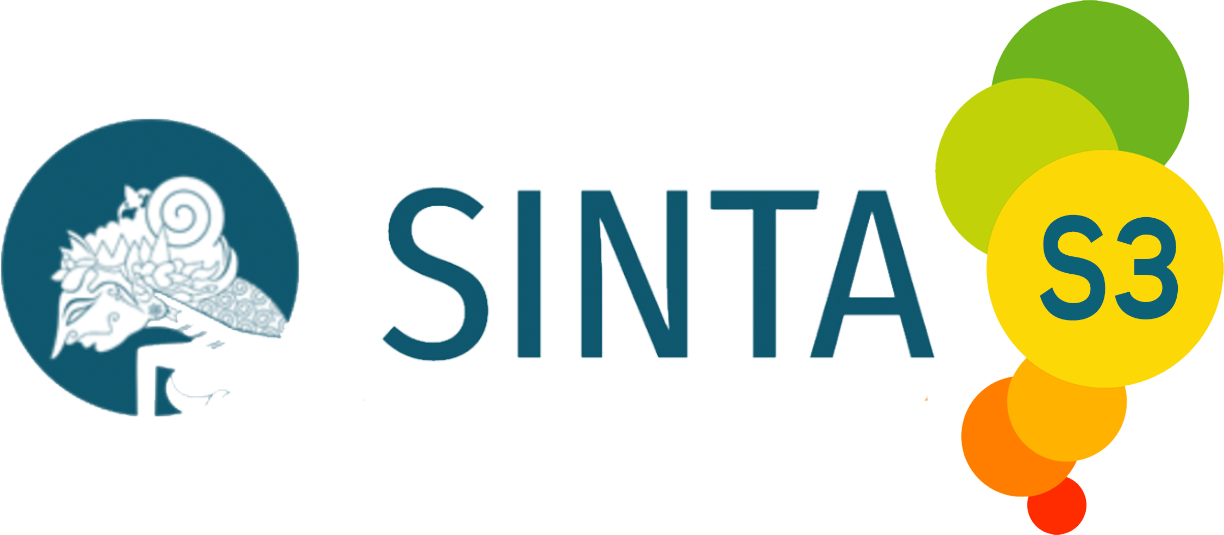The Effect of Different Starter Cultures on the Fermentation of Yogurt Added with Aqueous Extract of White Oyster Mushroom (Pleurotus ostreatus)
DOI:
https://doi.org/10.21776/ub.jitek.2020.015.01.6Keywords:
Fermentation, mono starter, oyster mushroom, starter activityAbstract
The objective of this study was to evaluate the effect of different starter cultures on the fermentation of yogurt added with aqueous extract of white oyster mushroom (Pleurotus ostreatus) whether each starter culture respond differently. This study used a completely randomized design (CRD) with 3 treatments and 4 replications. Yogurt was made with one of the starter cultures as treatment: Streptococcus thermophilus (ST), Lactobacillus acidophilus (LA), or Lactobacillus bulgaricus (LB). Data were analyzed using analysis of variance followed by the least significant difference test. The variables tested were pH, total acid content, viscosity and total lactic acid bacteria. The results showed that yogurt made with ST had lower pH and total acid than the others. The use of LB resulted in higher total acid content. The addition of different starter cultures in yogurt did not influence viscosity. Among starter cultures, the use of LA resulted in higher total lactic acid bacteria (LAB) than the others. However, the number of LAB from different treatments were not much different (within the range of 7 log CFU/mL). It is suggested that the three starter cultures are adaptive and capable to fermenting yogurt added with aqueous extract of white oyster mushroom (Pleurotus ostreatus).Â
References
Afriani, A. (2010). Pengaruh penggunaan starter bakteri asam laktat lactobacillus plantarum dan lactobacillus fermentum terhadaptotal bakteri asam laktat, kadar asam dan nilai pH dadih susu sapi. Jurnal Ilmiah Ilmu-Ilmu Peternakan, 13(6), 279–285. https://doi.org/10.22437/JII IP.V0I0.114
Anissa, D., & Eka Radiati, L. (2018). Effect of the addition of white oyster mushroom (Pleurotus ostreatus) extract on the manufacture of yogurt drink in terms of physical quality. Jurnal Ilmu Dan Teknologi Hasil Ternak, 13(2), 118–125. https://doi. org/10.21776/ub.jitek.2018.013.02.6
AOAC. (2005). Analysis of Official Analytical Chemistry Methods (18th ed.). Washington DC: AOAC International.
Badan Standardisasi Nasional. (2009). Yogurt. Jakarta.
Burton, E., Arief, I. I., & Taufik, E. (2014). Functional properties of carbonated probiotic yogurt. Jurnal Ilmu Produksi Dan Teknologi Hasil Peternakan, 2(1), 213–218.
Clark, S., Jung, S., & Lamsal, B. (2014). Food Processing: Principle and Application. West Sussex: John Wiley and Sons.
Dahlana, H. A., & Sania, N. A. (2017). The interaction effect of mixing starter cultures on homemade natural yogurt’s pH and viscosity. International Journal of Food Studies, 6(2), 152–158. https://doi.org/10.74 55/ijfs/6.2.2017.a3
Fatmawati, U., Prasetyo, F., T.A, M. S., & Utami, A. N. (2013). Karakteristik yogurt yang terbuat dari berbagai jenis susu dengan penambahan kultur campuran Lactobacillus bulgaricus dan Streptococcus thermophilus. Bioedukasi, 6(2), 1–9.
Lambeau, K. V., & McRorie, J. W. (2017). Fiber supplements and clinically proven health benefits. Journal of the American Association of Nurse Practitioners, 29(4), 216–223. https:// doi.org/10.1002/2327-6924.12447
Lazaridou, A., Serafeimidou, A., Biliaderis, C. G., Moschakis, T., & Tzanetakis, N. (2014). Structure development and acidification kinetics in fermented milk containing oat β-glucan, a yogurt culture and a probiotic strain. Food Hydrocolloids, 39, 204–214. https:// doi.org/10.1016/j.foodhyd.2014.01.015
Lisko, D., Johnston, G., & Johnston, C. (2017). Effects of dietary yogurt on the healthy human gastrointestinal (GI) microbiome. Microorganisms, 5(1), 6. https://doi.org/10.3390/micro organisms5010006
Pelaes Vital, A. C., Goto, P. A., Hanai, L. N., Gomes-da-Costa, S. M., de Abreu Filho, B. A., Nakamura, C. V., & Matumoto-Pintro, P. T. (2015). Microbiological, functional and rheological properties of low fat yogurt supplemented with Pleurotus ostreatus aqueous extract. LWT - Food Science and Technology, 64(2), 1028–1035. https://doi.org/10.1016/j.lwt.20 15.07.003
Pranamuda, H., Giarni, R., & Pranada, A. (2012). Aplikasi β-glukan sebagai bahan berkhasiat imunomodulator dan anti kanker. In Paper presented at Seminar Insentif Riset Sistem Inovasi Nasional (pp. 70–73). Jakarta.
Purbasari, A., Pramono, Y. B., & Muhammad, B. (2014). Nilai pH , kekentalan , citarasa asam , dan kesukaan pada susu fermentasi dengan perisa alami jambu air ( Syzygium sp ). Jurnal Aplikasi Teknologi Pangan, 3(4), 174–177.
Radiati, L. E., Jaya, F., Oktavianingsih, D. E., & Fayca. (2016). The Effect Of Super Red Dragon Fruit (Hylocereus Costaricensis) Peels On Physico Chemical, Antioxidant And Microstructure Of Chicken Saussage. In Paper presented at The 17th Asian-Australasian Association of Animal Production Societies Animal Science Congress (pp. 845–850). Fukuoka.
Robitaille, G., Tremblay, A., Moineau, S., St-Gelais, D., Vadeboncoeur, C., & Britten, M. (2009). Fat-free yogurt made using a galactose-positive exopolysaccharide-producing recombinant strain of Streptococcus thermophilus. Journal of Dairy Science, 92(2), 477–482. https://doi.org/10.3168/jds.2008-1312
Skryplonek, K., Henriques, M., Gomes, D., Viegas, J., Fonseca, C., Pereira, C., Mituniewicz-Małek, A. (2019). Characteristics of lactose-free frozen yogurt with κ-carrageenan and corn starch as stabilizers. Journal of Dairy Science, 102(9), 7838–7848. https:// doi.org/10.3168/jds.2019-16556
Subali, B. (2010). Analisis Statistika Menggunakan Program SPSS Aplikasinya dalam Rancangan Percobaan. Yogyakarta. Universitas Negeri Yogyakarta.
Tamime, A. Y., & Robinson, R. K. (2014). Yoghurt Science and Technology. Oxford: Pergamon Press Ltd.
Tjokrokusumo, D. (2008). Jamur tiram (pleurotus ostreatus) untuk meningkatkan ketahanan pangan dan rehabilitasi lingkungan. Jurnal Rekayasa Lingkungan, 4(1), 53–62.
Widyastuti, N., Baruji, T., Isnawan, H., Wahyudi, P., & Donowati, D. (2013). Analisa kandungan beta-glukan larut air dan larut alkali dari tubuh buah jamur tiram (Pleurotus ostreatus) dan shiitake (Lentinus edodes). Jurnal Sains Dan Teknologi Indonesia, 13(3), 182–191. https://doi.org/10.29122/js ti.v13i3.894
Downloads
Published
Issue
Section
License
Copyright (c) 2020 Sjaloom Sakul, Djalal Rosyidi, Lilik Eka Radiati, Purwadi Purwadi

This work is licensed under a Creative Commons Attribution 4.0 International License.
Authors who publish with this journal agree to the following terms:
- Authors retain copyright and grant the journal right of first publication with the work simultaneously licensed under a Creative Commons Attribution License that allows others to share the work with an acknowledgement of the work's authorship and initial publication in this journal.
- Authors are able to enter into separate, additional contractual arrangements for the non-exclusive distribution of the journal's published version of the work (e.g., post it to an institutional repository or publish it in a book), with an acknowledgement of its initial publication in this journal.
- Authors are permitted and encouraged to post their work online (e.g., in institutional repositories or on their website) prior to and during the submission process, as it can lead to productive exchanges, as well as earlier and greater citation of published work (See The Effect of Open Access).















